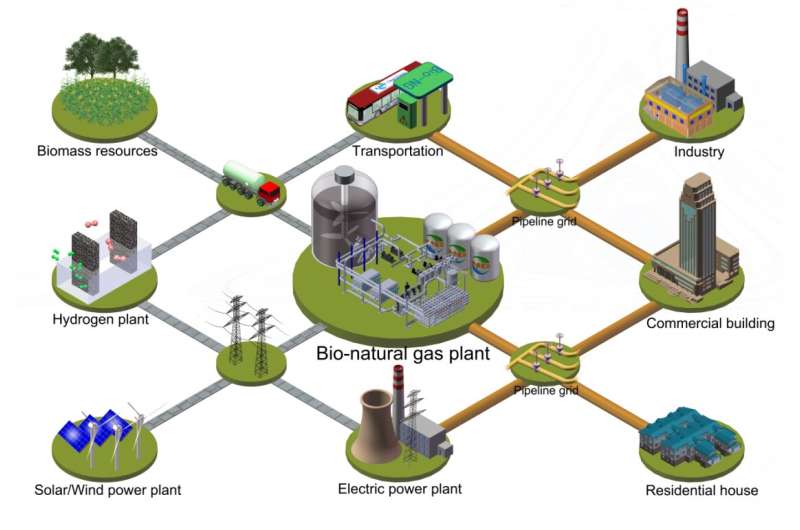New catalytic approach directly converts raw biomass into natural gas with low carbon footprint

Natural gas can be used as fuel for generating electricity, heating and powering transportation. It is also the raw material to manufacture hydrogen and ammonia.
Currently, biogenic and thermogenic processes are the two widely accepted methods for natural gas production. A high content of CO2 in gas products is inevitable during these processes, which cannot satisfy the composition requirements of pipeline natural gas.
A research group led by Prof. Lu Fang from the Dalian Institute of Chemical Â鶹ÒùÔºics (DICP) of the Chinese Academy of Sciences (CAS) proposed an efficient catalytic approach to directly transfer solid biomass into natural gas with low carbon footprint.
This study was published in Nature Communications on January 11.
The researchers prepared a robust catalyst with Ni2Al3 alloy phase, achieving nearly complete conversion of various agricultural and forestry wastes into natural gas. In the conversion process, the total carbon yield of gas products reached up to 93% after several hours, and the catalyst showed powerful processing capability for the production of natural gas during 30 cycles.
"Life cycle assessment revealed that the life cycle primary fossil energy depletion and greenhouse gas emissions in this process could be reduced by 26% and 34%, respectively, compared to the fossil-natural gas" said Prof. Lu.

What's more, bio-natural gas produced from the combined hydrogen with lignocellulosic biomass can be further applied in industry, transportation, and electric power plants using the existing transportation pipelines.
More information: Xiaoqin Si et al, Catalytic production of low-carbon footprint sustainable natural gas, Nature Communications (2022).
Journal information: Nature Communications
Provided by Chinese Academy of Sciences


















